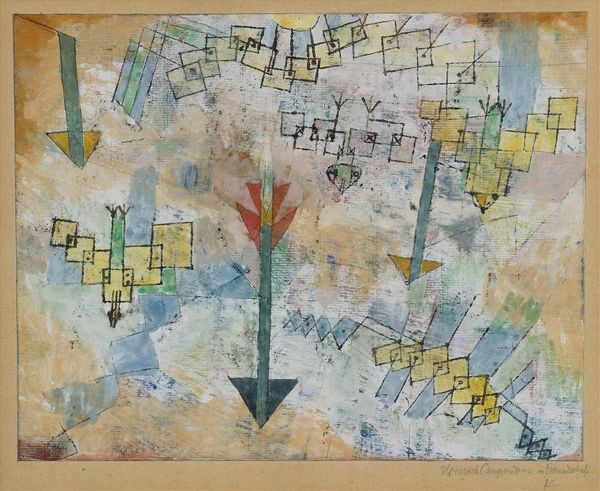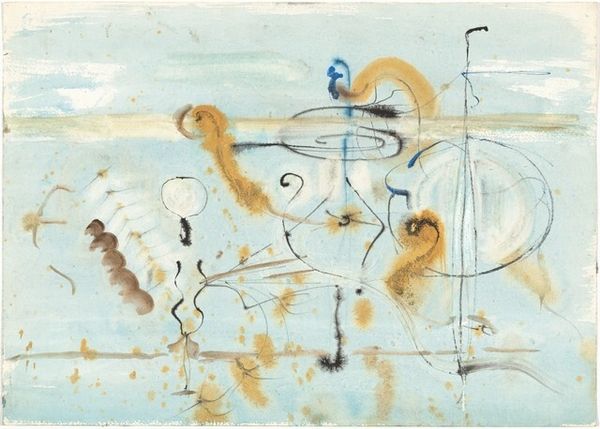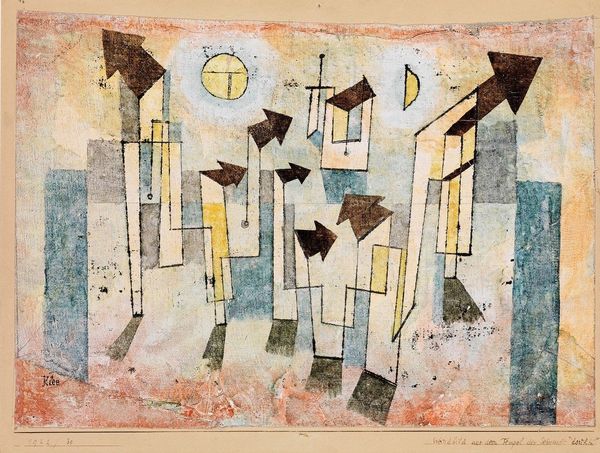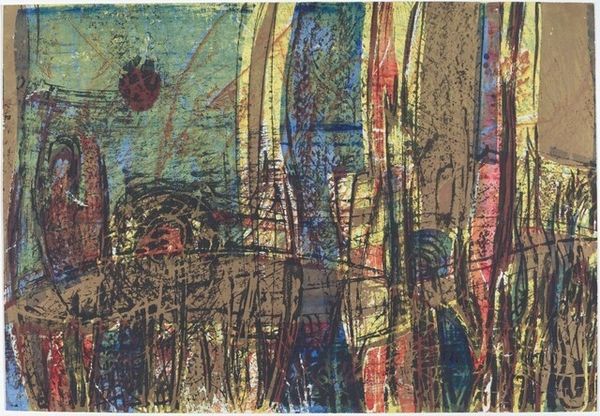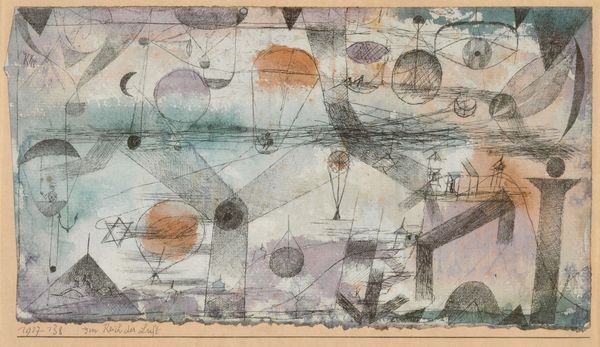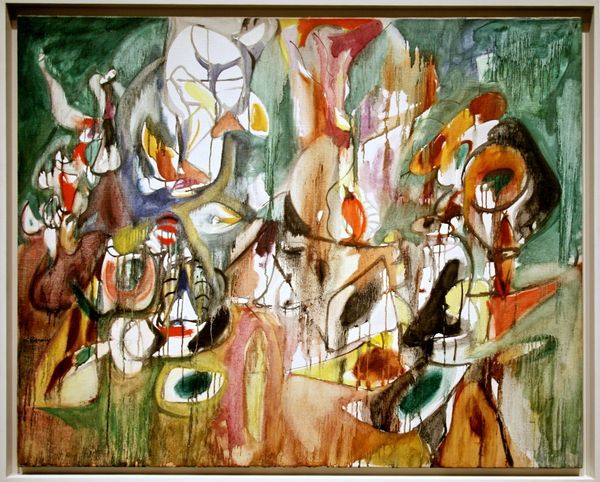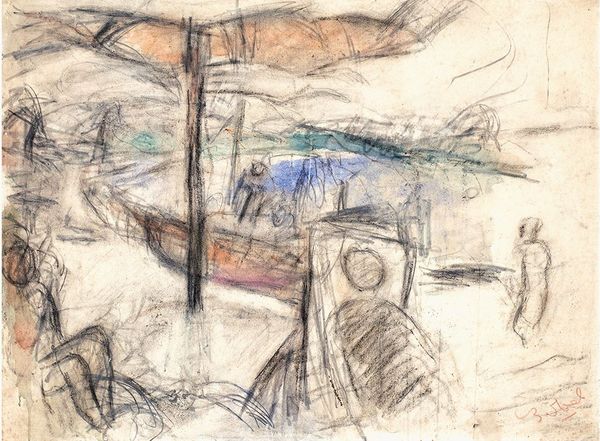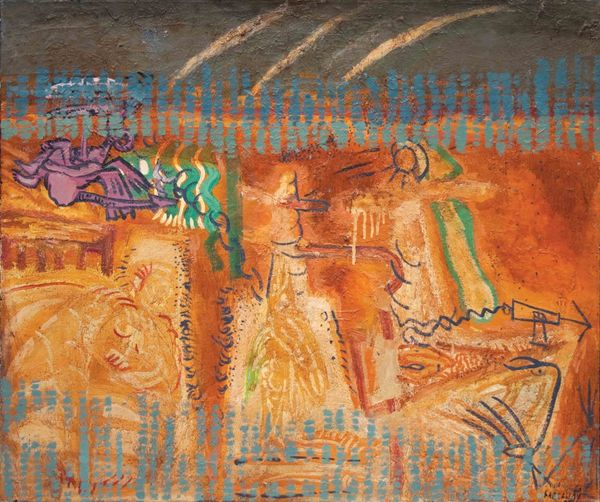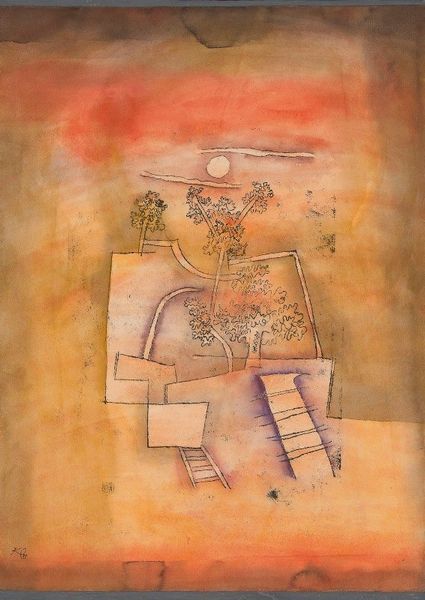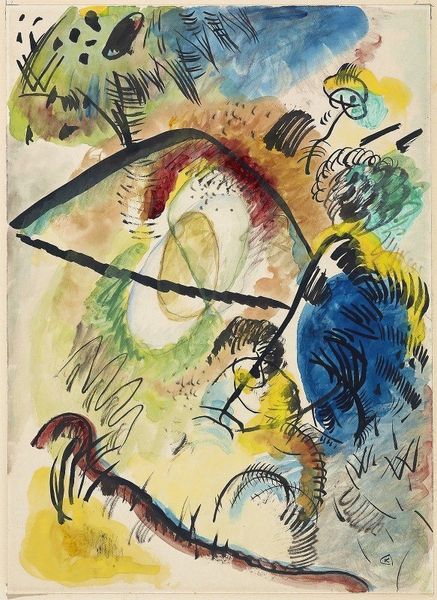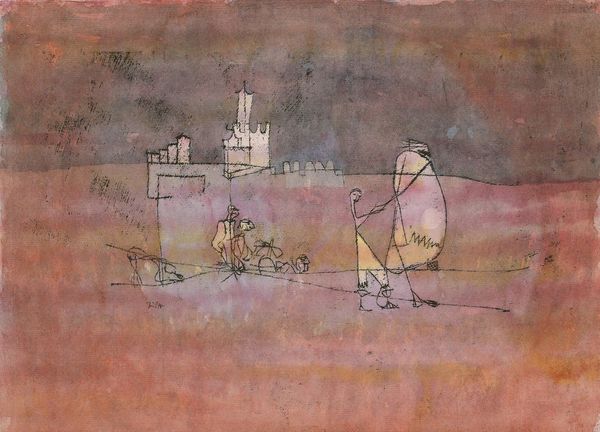
Copyright: Public domain
Curator: Wols, working in 1940, created this evocative piece titled "Camp des Milles." It's a mixed-media work, primarily watercolor and ink on paper. Editor: It has such a frenetic energy, almost like looking at a landscape fractured by trauma. There’s a rawness in the lines and a unsettling beauty in the washed-out colours. Curator: The title provides a crucial lens, doesn’t it? Camp des Milles was an internment camp in France during World War II. Knowing that gives the chaos a very specific context. Editor: Absolutely. Suddenly, the abstract shapes begin to suggest the crammed spaces, the emotional turmoil, the disorienting experience of confinement. That circle in the top right—is it a broken clock? Curator: Possibly. Wols himself was interned, wasn't he? "Camp des Milles," thus, transforms from abstraction to visceral social commentary. It’s a representation of precarity, a visual record of persecution and forced displacement. Consider the significance of him, as a Jew, being interned, then creating a symbolic account of this moment of extreme state violence. Editor: The lower part—that dark mass feels oppressive, like a weight. I’m struck by how the technique mirrors the feeling. It's all layered, frantic strokes and overlapping washes. Are there veiled symbolic figures too? It almost looks as if people are dissolving into each other, their identities are wiped out in a kind of anonymity and terror. Curator: Indeed. It challenges us to confront the violence of the era but in a way that transcends a simple illustration of the event. He uses expressive lines and disorienting form to signify psychological states. Editor: Looking at it again, that dissolving quality reminds me of how easily individual lives and histories can be erased in the face of larger political forces. What does that signify and how did Wols deal with such moments through his art? Curator: It certainly offers insight into how we continue to grapple with those legacies of trauma and dehumanization that have an eerie resonance even today. Editor: It really does, making you feel the deep echoes across time and question how societies create "otherness." The painting becomes a haunting mirror, doesn’t it?
Comments
No comments
Be the first to comment and join the conversation on the ultimate creative platform.
